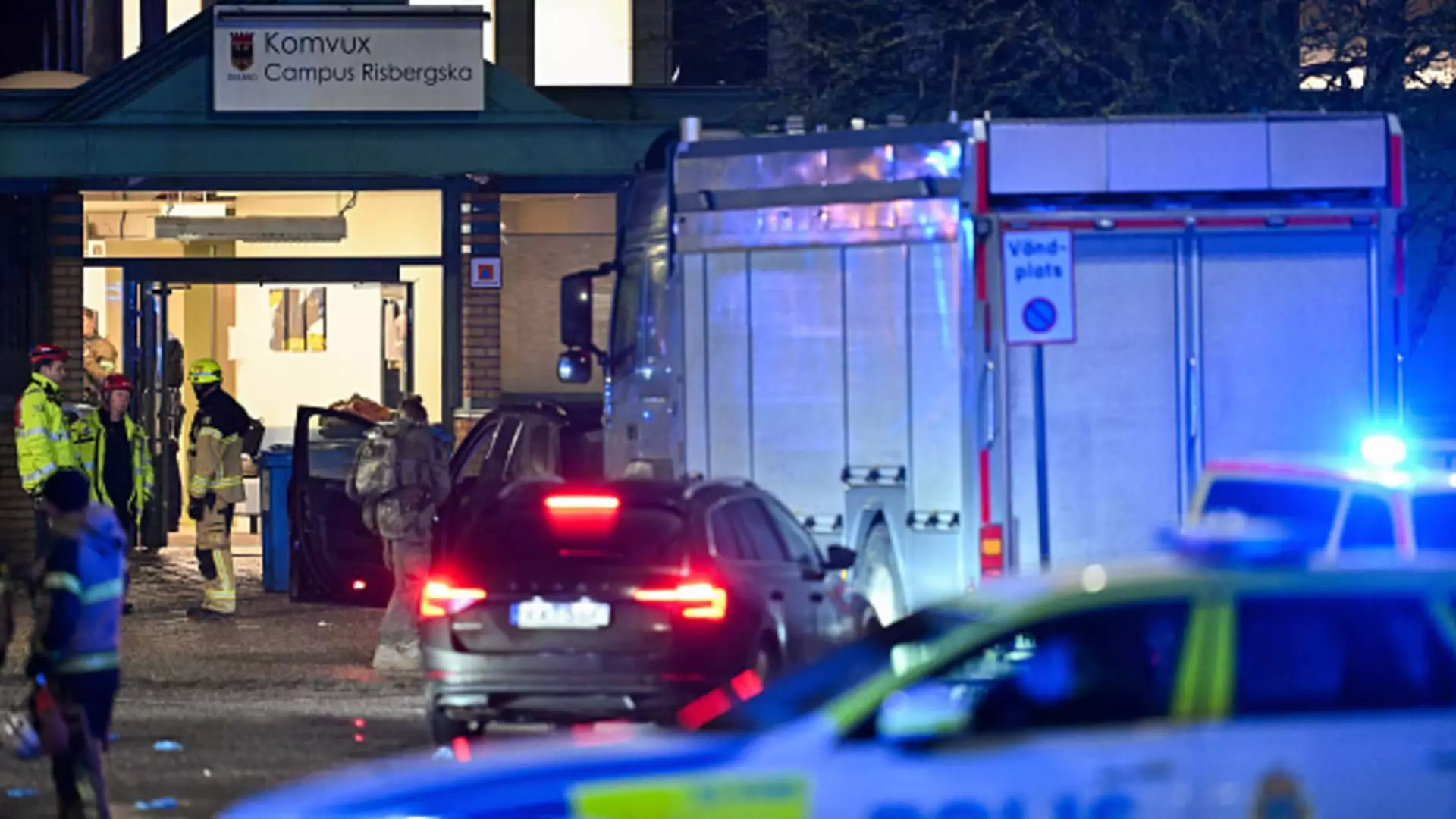On a fateful Tuesday, the serene landscape of Orebro, Sweden was shattered as a shooting unfolded at an adult education center, claiming the lives of approximately ten individuals. This horrific incident marks one of the deadliest attacks in Sweden’s history, sending shockwaves throughout the country and igniting a nationwide conversation on safety and gun violence. As Sweden grapples with this tragedy, it raises pressing questions about security, social conditions, and the underlying issues contributing to such extreme violence.
The gunman, whose identity remains under investigation, is believed to be among the deceased, leading local police authorities to confirm that he acted alone. While initial evaluations suggested that terrorism was not a motive behind this mass shooting, the complete picture remained elusive as investigations continued. Local police chief Roberto Eid Forest emphasized the scale of the crime scene and the intricate process of gathering evidence and testimonies. This shooting is not just another crime; it is a stark reminder of the vulnerabilities existing in spaces meant for education and personal growth.
Authorities have officially opened inquiries into murder, arson, and aggravated weapons offenses, underlining the seriousness of the situation. The investigation aims to paint a comprehensive profile of the perpetrator while piecing together the events leading up to this tragedy. The community’s reaction oscillates between disbelief and anger, as citizens grapple with the fallout of a violent act that seems so out of character for their nation.
Witness accounts have painted a vivid picture of horror at the Risbergska school, where the shooting took place. Maria Pegado, a 54-year-old teacher, recounted the moment the attacker burst into her classroom, compelling her and her students to flee in the face of danger. Her poignant description of the chaos that followed—hearing gunshots and witnessing injured individuals being dragged away—serves as a haunting reminder of the fragility of life. These accounts emphasize not only the violence inflicted upon the victims but also the psychological scars left on survivors.
The adult education center, catering predominantly to immigrants seeking to improve their qualifications and integrate into Swedish society, now stands as a somber reminder of the human cost tied to a violent act that may have stemmed from deeper societal issues. It underscores the pressing need for dialogue around mental health, community support, and proactively addressing potential warning signs before violence escalates.
Swedish Prime Minister Ulf Kristersson expressed the gravity of the situation, labeling it a “painful day for the whole of Sweden.” His words resonate deeply with citizens who are reeling from the loss of life and mourning as one. King Carl XVI Gustaf conveyed his family’s profound sorrow, while European Commission President Ursula von der Leyen extended solidarity from beyond Sweden’s borders. These statements highlight not only the national mourning but also the broader emotional impact that this tragic event has had on Sweden’s reputation as a safe and secure nation.
Sweden has experienced a troubling increase in incidents of violent crime, driven by rampant gang activities. This incident, however, forces a shift in the conversation surrounding gun violence—transitioning from a focus on gang-related incidents to the troubling emergence of attacks in institutions meant for learning and growth. The juxtaposition of Sweden’s high rate of legal gun ownership, primarily for hunting, against rising gang violence challenges longstanding perceptions about crime and safety in the country.
As the nation begins to process this tragedy, questions loom large about how to prevent violence from recurring in spaces designed for education and community engagement. The lesson to be learned is not solely about the actions of an individual but about the system as a whole—economic disparities, social integration, and the necessity for mental health resources.
In the aftermath, the focus now shifts to prevention strategies to ensure that institutions remain safe for all involved and that individuals feel secure while pursuing their education. Increasing support for community programs aimed at integration and mental health could provide a profound impact, potentially transforming the narrative surrounding violence in Sweden.
This heinous act should serve as a critical turning point; a moment not only for mourning but also for reflection on the society’s values and priorities. The resolve to confront these issues head-on is essential, as a united Sweden will honor the memory of those lost and work tirelessly to prevent future tragedies.


Leave a Reply